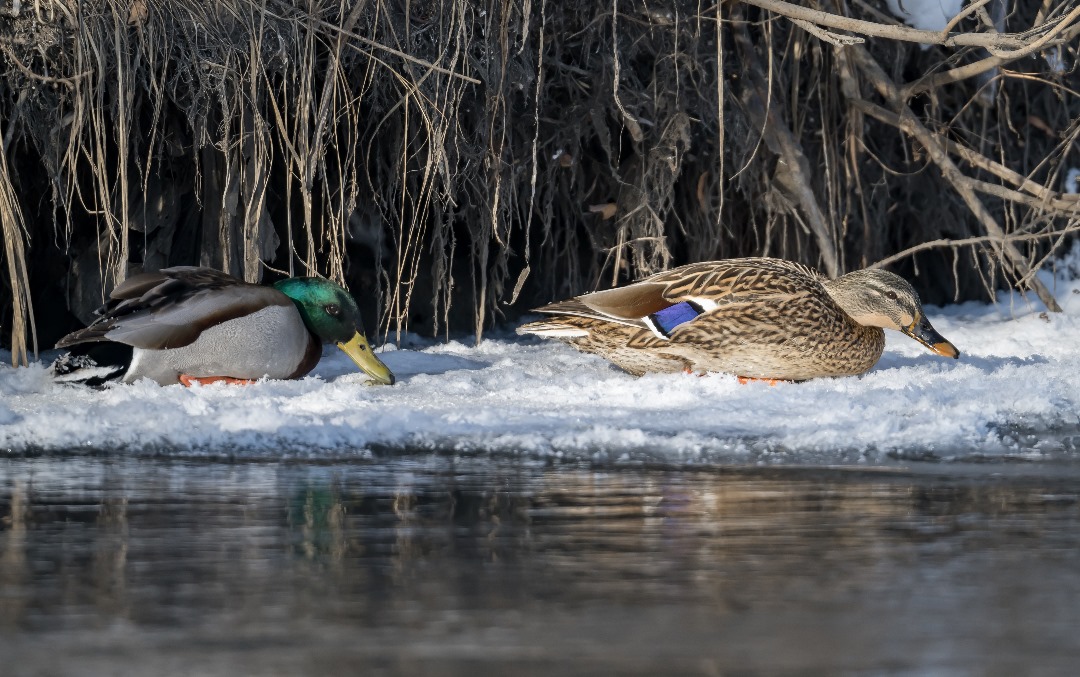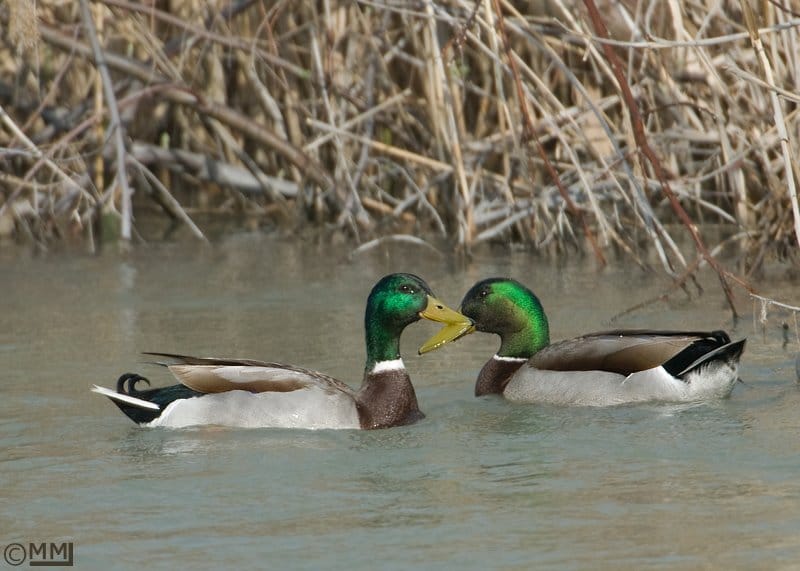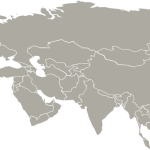
Another rather northern question, but why don’t ducks’ feet – with their thin webs – freeze to the ice? Obviously, like everything else these days: because of global warming!

The real answer lies in the design of the blood circulation system in the legs of ducks (and many other creatures). The arteries and veins are in close proximity to each other. Ducks do get cold feet, but not ice-cold. There is a counter-current heat exchange between the warm arterial blood flowing to the foot and cold venous blood returning from the foot. This system maintains as much heat in the body core of the duck as possible without letting the foot freeze. Humans, not being birds, are imperfect. As primates we do not have these cold weather adaptations, nor did our feet touch the ground until Lucy dropped out of her tree. We stand on the ice long enough and our feet freeze to the ice, our blood continues being chilled down and finally our core temperature drops below the necessary minimum. And that’s not the only thing that will drop down…
Of course, this was a very boring question with a rather gruesome ending. There are many more fun facts about waterfowl that do not end with frozen humans.











New Scientist has a book with the title “Why don’t penguins’ feet freeze?” https://www.univ.ox.ac.uk/book/why-dont-penguins-feet-freeze/#:~:text=Why%20don't%20penguins%20feet,them%20sticking%20to%20the%20ice.
Excellent addition to this post – it’s not just ducks that are amazing!